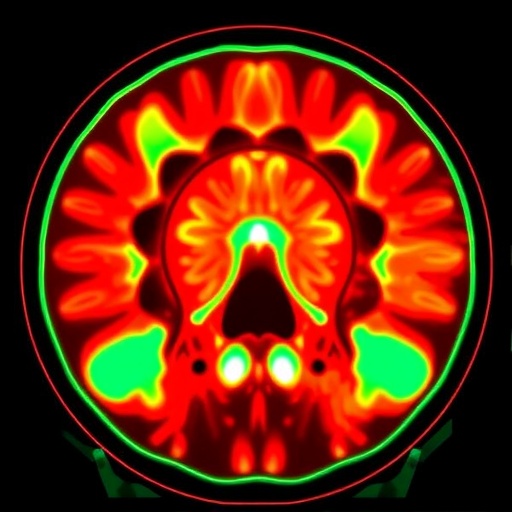In the realm of pediatric cardiac imaging, the quest for optimal techniques that minimize radiation exposure while maximizing image quality has emerged as a principal concern for medical professionals and researchers alike. A recent study led by a team of experts, including Dang, Zhou, and Arguello Fletes, delves into this critical issue, particularly focusing on the nuanced capabilities of photon-counting computed tomography (CT). Their research, examining the effectiveness of different X-ray tube voltages—70 kV versus 120 kV—offers promising insights into how practitioners can enhance diagnostic accuracy in infants without compromising safety.
Radiation exposure is a glaring concern in the field of medical imaging, notably among the pediatric population, who are more sensitive to the detrimental effects of ionizing radiation than adults. As advancements in imaging technologies like CT have allowed for better visualization of complex anatomical structures, they have simultaneously raised alarms regarding the potential risks associated with increased radiation doses. In light of this, balancing radiation dose with image quality in infants has become an essential focal point in clinical settings, especially in diagnosing congenital heart diseases, which often necessitate precise imaging for effective management.
Photon-counting CT, a cutting-edge imaging technology, stands out for its ability to provide high-resolution images while potentially reducing radiation exposure. Unlike conventional energy-integrating detectors that measure the sum of photon energies, photon-counting technology captures individual photons, thus enabling detailed spectral information about the imaged tissue. This advanced method supports more precise imaging modalities tailored to the unique physiological characteristics of pediatric patients, marking a significant breakthrough in pediatric radiology.
The research conducted by Dang and colleagues meticulously compares the effects of using two different tube voltages during cardiac imaging in infants. By evaluating the diagnostic outcomes associated with both 70 kV and 120 kV protocols, the researchers aimed to identify an optimum pathway that would maintain high image quality while effectively curtailing the radiation dose delivered to these vulnerable patients. Their findings are poised to influence clinical decision-making and protocol standardization in pediatric imaging practices.
Results from the study suggest that the 70 kV protocol may offer significant advantages over the traditional 120 kV approach. The lower voltage setting has demonstrated the potential for similar or even enhanced image quality when analyzing specific cardiac structures, thereby facilitating accurate diagnoses with reduced radiation exposure. This finding is particularly significant as it underscores the importance of adaptive imaging techniques that prioritize patient safety while meeting the rigorous demands of diagnostic precision required in cardiology.
Moreover, the study emphasizes the importance of tailored imaging protocols that take into consideration the varying anatomical sizes and physiological responses of infant patients. Modifying tube voltage is just one aspect of a broader strategy aimed at improving the overall safety profile of imaging practices. The integration of individualized protocols will require collaboration across various medical disciplines, particularly between radiologists and pediatric cardiologists, to ensure all stakeholders are aligned with the ultimate goal of protecting children during diagnostic procedures.
The implications of this research extend beyond immediate clinical applications; they also pave the way for future advancements in imaging technology and methodologies. By demonstrating the efficacy of lowered radiation protocols, this study reinforces the need for ongoing innovation in imaging practices aimed at improving patient outcomes without adding excess risk. As more data emerges, the medical community can work together to create a robust framework for pediatric imaging that emphasizes safety, efficacy, and patient-centered care.
Additionally, the study provides a blueprint for further research into the optimization of imaging procedures across a range of clinical scenarios. Future investigations may explore the long-term effects of varying radiation doses on pediatric populations, shedding light on the cumulative risks associated with repeated imaging. Engaging in comprehensive studies will be critical to informing best practices that align with the evolving landscape of medical imaging and radiation safety.
It’s worth noting that while the results are promising, they underscore the necessity for heightened vigilance and education among medical professionals regarding the importance of radiation dose management. Continuous training and updated guidelines will be essential in fostering an environment where safety and quality converge seamlessly in pediatric imaging.
In conclusion, Dang, Zhou, and Arguello Fletes’ research stands at the forefront of a vital conversation in pediatric radiology: how to navigate the ever-present balancing act between radiation exposure and diagnostic accuracy. As the field advances, the insights gleaned from this study will undoubtedly shape future protocols, ensuring that the pursuit of excellence in cardiac imaging is matched by a steadfast commitment to patient safety.
In a time where healthcare professionals are tasked with making decisions that blend technology and compassion, this research acts as a beacon for others to follow, advocating for methods that promise to alter the clinical landscape positively. The call for optimized protocols resonates, signifying a collective movement towards enhanced pediatric care, and reminding us that in every image captured, there lies a broader responsibility toward the health and safety of our youngest patients.
Subject of Research: Pediatric cardiac imaging protocols
Article Title: Balancing radiation dose and image quality in infants on photon-counting CT for pediatric cardiac imaging: comparing 70 kV and 120 kV protocols.
Article References:
Dang, N., Zhou, W., Arguello Fletes, G. et al. Balancing radiation dose and image quality in infants on photon-counting CT for pediatric cardiac imaging: comparing 70 kV and 120 kV protocols.
Pediatr Radiol (2025). https://doi.org/10.1007/s00247-025-06467-0
Image Credits: AI Generated
DOI: 10.1007/s00247-025-06467-0
Keywords: Pediatric cardiac imaging, radiation dose, image quality, photon-counting CT, congenital heart disease, imaging protocols.
Tags: advanced imaging technologies for childrenbalancing radiation and image qualitycongenital heart disease diagnosis techniquesenhancing image quality in infant imagingionizing radiation effects on childrenmedical imaging advancements for infantsminimizing radiation dose in pediatric CToptimizing radiation exposure in childrenpediatric cardiac imagingphoton-counting computed tomography benefitssafety concerns in pediatric imagingX-ray tube voltage comparison in CT





